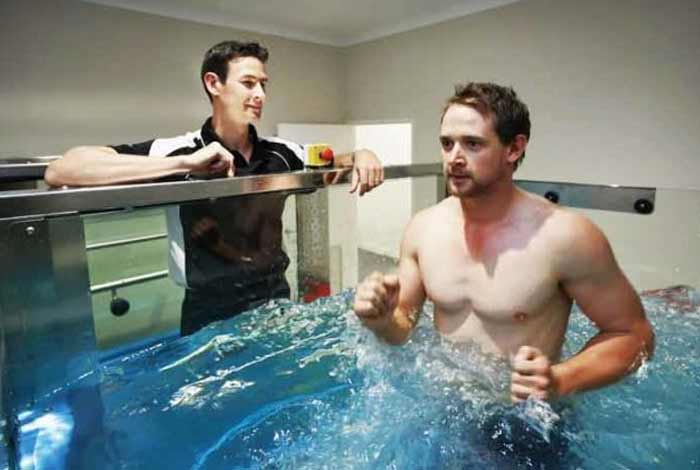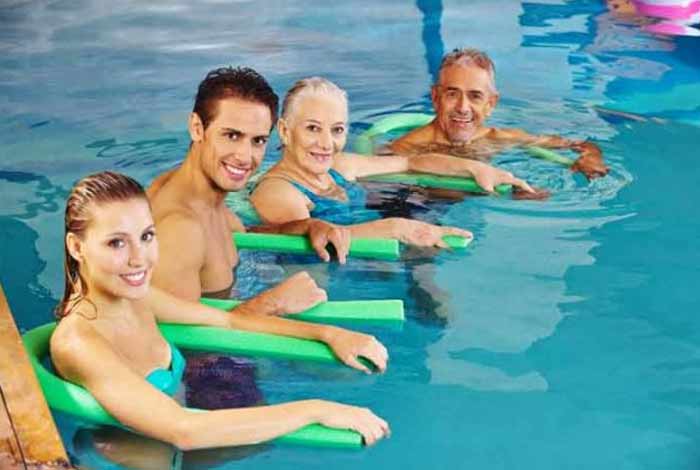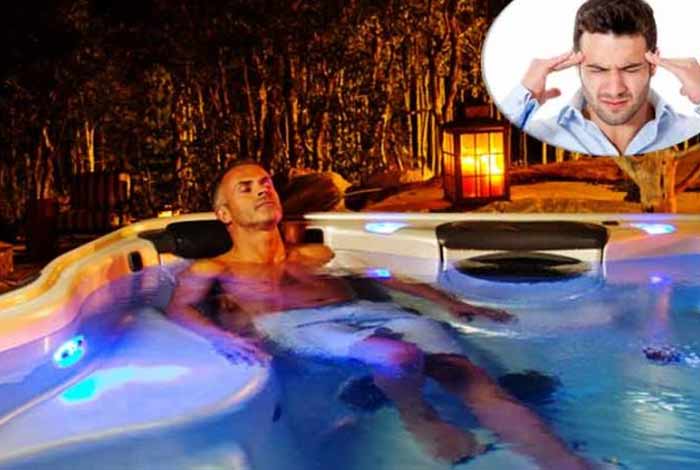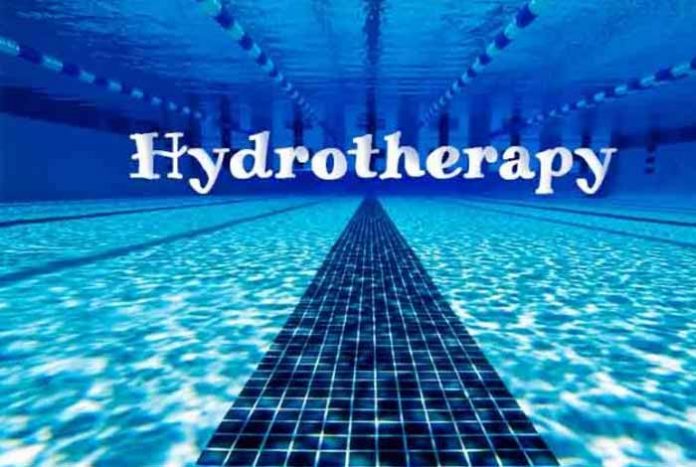
Hydrotherapy is the therapeutic use of water for maintaining, restoring and regulating health. Treatments that utilizes hydrotherapy include saunas, steam baths as well as hot and cold compresses, among others. Water can be used both for internal and external areas of the body in it all three physical states, viz, liquid, ice and steam.
From ancient Roman bathhouses to old historic American sweat lodge, therapeutic use of water has been a widely accepted technique since ages. Many cultures in the past, including Greek, Egyptian, Chinese and Japanese had encouraged the use of water to ward off various diseases and health conditions.
The implementation of aromatic massage, saunas, steam baths to promote wellbeing and health has been accepted since the first century. In the 20th century, a monk from Bavaria observed that his patients were cured from disease after bathing into water streams few times a week. This motivated him to formulate several hydrotherapy techniques that are used even today.
Hydrotherapy depends on the principle that water has the ability to alter the blood flow and revitalize human health. Nevertheless, temperature surely plays a critical role in hydrotherapy, and different ailments can be controlled or cured by using different temperature ranges.
Cold water helps shrink blood vessels and restricts blood flow and hence, reduces inflammation. It also enhances the movement of blood towards various organs so as to make them work more efficiently. On the other hand, hot water relaxes the body by relaxing the blood vessels and increasing blood flow through them. This ensures better flow of blood towards the skin and muscles; ultimately, relieving stiffness.
Using hot and cold water simultaneously or alternately is common in every hydrotherapy technique. It is said to regulate hormone function, improve blood circulation and restore normal functioning of organs. Some hydrotherapies (hydro-massages) revive the mind and body by allowing the person to float freely with their body being massaged by the flowing water, which activates touch receptors on the skin.
Mechanism of Hydrotherapy:
The curative nature of hydrotherapy is due to water’s mechanical and/or thermal effects. Hydrotherapy extensively exploits the body’s response to water pressure, cold and hot stimuli and long-term application of heat. When nerves send the sensation received by the skin to travel deep into the body, it then boosts the immunity, improves digestion and blood circulation, influences stress hormone production and lowers pain sensation. In general, heat sensation helps to relax the body and decrease activity of internal organs, whereas cold sensation stimulates and increases internal activity inside the body.
Pain, or any type of physical or mental stress may result in chemical changes within the body that can cause increased blood pressure and pulse rate. Periodic hydrotherapy treatments help reduce such symptoms by reducing the swelling and pain of joints, and reducing stress reactions.
Types of Hydrotherapy:
Hydrotherapy is broadly categorized into two different types:
1. External Hydrotherapy: External hydrotherapy involves the direct application of ice or water on to the body or immersing the whole body into the water. Temperature-controlled hydrotherapy involves various effects of cold or hot water on the skin and its impact on the underlying tissues. Hot water, therefore, helps soothe muscles and causes sweating. It cures soreness, poor circulation and arthritis, and in combination with aromatherapy is known to treat rheumatism. Besides, cold-water hydrotherapy helps in relaxing the muscles and increasing the blood flow.
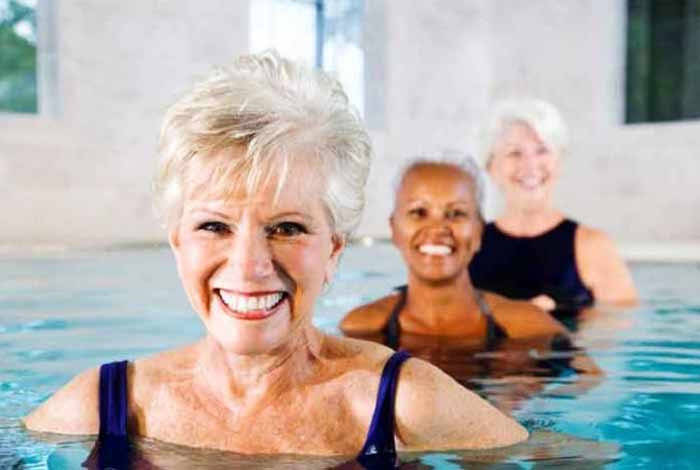
2. Internal Hydrotherapy: Internal hydrotherapy involves enemas and colonic irrigation. Saunas and steam baths are examples of internal hydrotherapy. Colonic irrigation is a type of enema used to cleanse colon and intestinal tract for any traces of fecal material. It is believed to treat a number of digestive disorders.
Benefits of Hydrotherapy:
Some general benefits of hydrotherapy are listed below:
- It helps relieve chronic, long-lasting or acute pain.
- It eliminates wastes through detoxification.
- It helps relieve stiff muscles and enhances the process of muscle relaxation.
- Hydrotherapy boosts digestion and increases metabolic rate.
- It hydrated cells and improves skin tone.
- It helps in the strengthening the immune system.
- It stimulates the blood supply to various parts, hence improves the functioning of internal organs.
- It helps in the healing of injured limbs, burns and frostbite, soothes sore muscles and joints, relieves headaches, cures skin problems, and eases labor pains.
- It helps maintain cardiovascular fitness.
- It is also known to strengthen and restoration of muscles.
Hydrotherapy for Several Medical Conditions:
- Pain: Hydrotherapy is proved vital and highly effective in stimulating endorphins — hormones that control pain.
- Stress: Hydrotherapy helps in alleviating the stress and treating stress-related illnesses, such as digestive problems, low blood pressure, high blood pressure, sleep disorders, anxiety attacks, headaches and insomnia.
- Back Pain: Alternate hot and cold water treatments are given over the affected area for severe back pain. The heat application increases blood flow to the area, thereby relaxing the muscles; while cold application helps reduce inflammation. Chronic backaches can be treated by alternative hot and cold showers.
- Arthritis: Hydrotherapy can help treat any type of arthritis. The process involves submerging in water either to exercise or soak in.
- Insomnia: Hydrotherapy causes the blood move far away from the head. Insomnia is generally caused by increased blood levels in the brain. Application of cold ice packs, hot foot baths, and alternative cold and hot baths are extremely effective in insomnia.
- Joint Pain: Jacuzzis, conventional hot tubs, whirlpools help treat muscle and joint pain and restore muscle strength.
- Headache: Hydrotherapy is very useful in curing headaches. Use of cold ice packs and hot baths is very helpful.
- Stomach Problems: Colonic hydrotherapy is can be employed to treat irritable bowel syndrome, indigestion, constipation and other digestive problems. Colonic hydrotherapy reduces associated symptoms, such as bloating, stomach cramps and gas; thus, eases bowel movement and flushes toxins out of the colon.
- Sciatica: Hydrotherapy works against the symptoms of sciatica. Hot tub therapy is known to be effective in decreasing sciatica-related pain.
Risks of Hydrotherapy:
There are some risks associated with hydrotherapy that are discussed below:
- Internal hydrotherapy techniques like vaginal douching, colonic irrigation and enemas are not well accepted, because these techniques can harm a person by altering the natural balance of vagina and gastrointestinal tract.
- Hydrotherapy also poses the risk of allergic reactions, called contact dermatitis in patients, who use essential oils and herbs in their bath water.
- Excess heating is one of the most common side effects of hydrotherapy. This occurs when an individual remains in a hot water tub or jacuzzi for a longer duration.
- Other hazards like drowning, fall, skin irritation, electric shock, droplet infections like legionella are also known to be associated with hydrotherapy.
- Cold baths should not be taken by elderly people and children, whereas hot baths/saunas are not recommended for people suffering from heart ailments.


